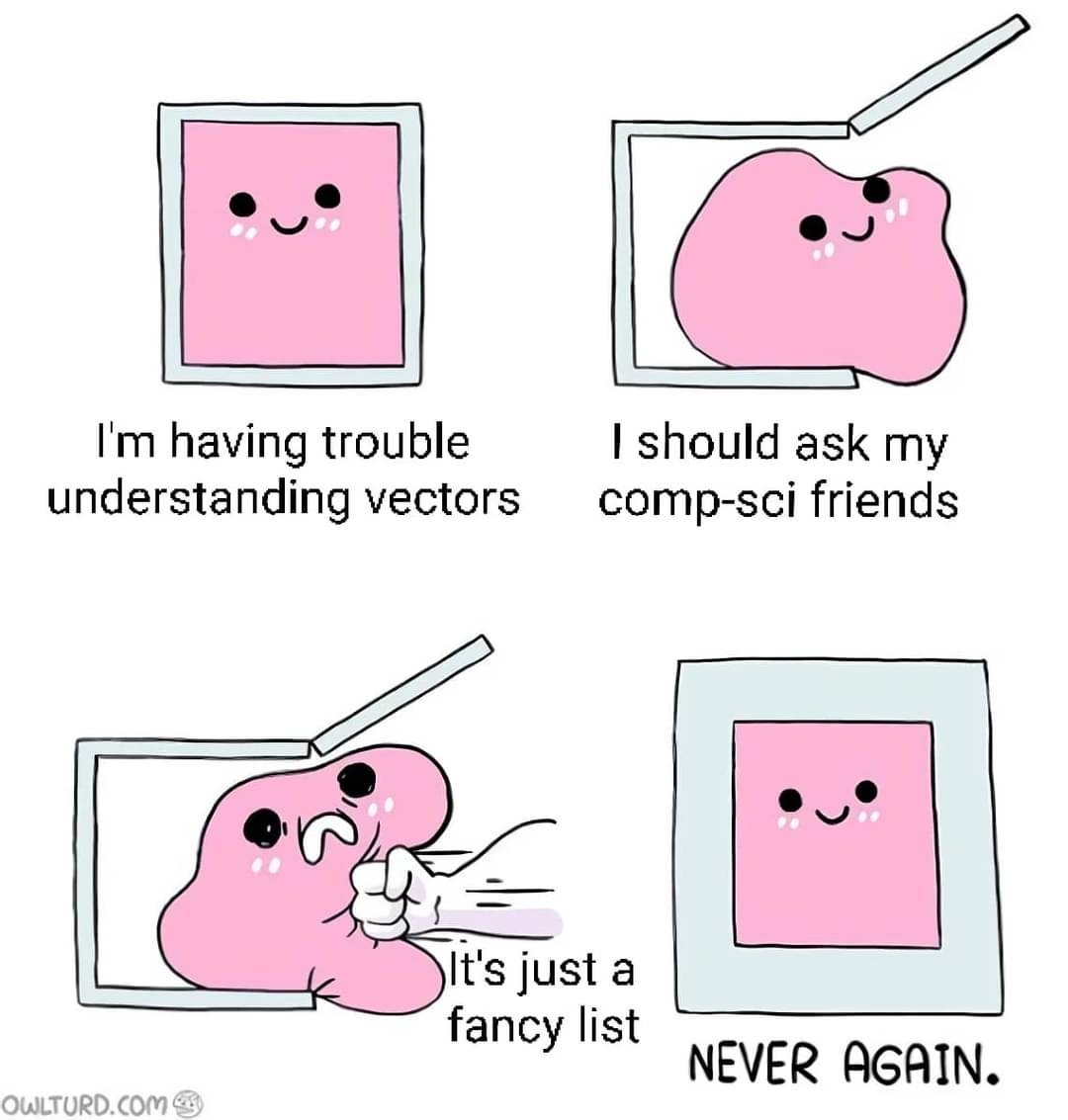this post was submitted on 28 Apr 2024
489 points (96.9% liked)
Science Memes
11523 readers
2897 users here now
Welcome to c/science_memes @ Mander.xyz!
A place for majestic STEMLORD peacocking, as well as memes about the realities of working in a lab.

Rules
- Don't throw mud. Behave like an intellectual and remember the human.
- Keep it rooted (on topic).
- No spam.
- Infographics welcome, get schooled.
This is a science community. We use the Dawkins definition of meme.
Research Committee
Other Mander Communities
Science and Research
Biology and Life Sciences
- [email protected]
- [email protected]
- [email protected]
- [email protected]
- [email protected]
- [email protected]
- [email protected]
- [email protected]
- [email protected]
- [email protected]
- [email protected]
- [email protected]
- [email protected]
- [email protected]
- [email protected]
- [email protected]
- [email protected]
- [email protected]
- [email protected]
- [email protected]
- [email protected]
- [email protected]
- [email protected]
- [email protected]
- !reptiles and [email protected]
Physical Sciences
- [email protected]
- [email protected]
- [email protected]
- [email protected]
- [email protected]
- [email protected]
- [email protected]
- [email protected]
- [email protected]
Humanities and Social Sciences
Practical and Applied Sciences
- !exercise-and [email protected]
- [email protected]
- !self [email protected]
- [email protected]
- [email protected]
- [email protected]
Memes
Miscellaneous
founded 2 years ago
MODERATORS
you are viewing a single comment's thread
view the rest of the comments
view the rest of the comments

What happens to elements with powers of x above 3? Say we multiply the example vector above with itself. We would end up with a component d^2^x^6^, witch is not part of the P3R vector space, right?
Do we need a special multiplication rule to handle powers of x above 3? I've worked with quaternions before, which has " special" multiplication rules by defining i j and k.
Multiplication of two vectors is not an operation defined on vector spaces. If you want that, you’re looking at either a structure known as an inner product space or an algebra over a field.
Note that the usual notion of polynomial multiplication doesn’t apply to polynomial vector spaces, nor does it agree with the definition of an inner product nor the bilinear product of an algebra.
That's only if you're working with the perspective of it being a polynomial. When you're considering the polynomial as a vector however, that operation simply doesn't exist